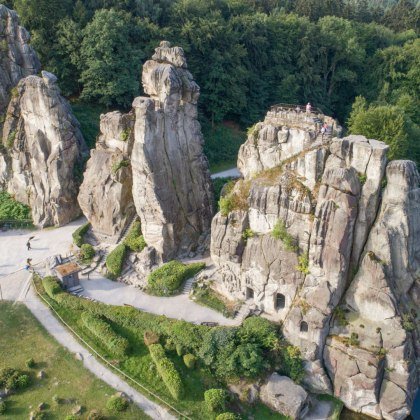
The Mettmann district is world-famous – though few people in Africa or America would recognise the name. Everyone has heard of the region’s most prominent inhabitant, however. Over 150 years ago, the remains of a Neanderthal man were found in the Mettmann district, also known as neanderland. This was the site of the first discovery of a Neanderthal anywhere in the world.
The skeleton was discovered in 1856 as a result of the limestone quarrying that had commenced during the industrialisation of Germany. Workers discovered skeleton bones in a cave, which were later identified as the remains of early humans. The region itself got its name from the 17th-century theologian and hymn composer Joachim Neander, who held church services and composed hymns in what was then a deep and narrow gorge.
The valley is no longer deep and narrow, and its waterfalls, cliffs and caves have also largely disappeared. Today, a rich green mantle of beech, hornbeam and ravine forests cover the hills, slopes and former quarries.
Re-landscaping of Neanderthal discovery site
The Kleine Feldhofer Grotte cave where the Neanderthal remains were found is long gone – the victim of limestone quarrying. Instead guests find the new, multimedia experience tower "Höhlenblick", which rises 22 meters high above the ground. It is crowned by a skull replica of the original find, enlarged fifty times.
There is a lot more to discover in the nearby Neanderthal Museum. The history of mankind from our origins on the African savanna more than four million years ago to the present day is told at one of the most modern museums in Europe. In the Stone Age Workshop, visitors can make flint knives and even equip themselves with a bow and arrow for an authentic Ice Age hunt. Weapons are most definitely not allowed, however, in the nearby Ice Age Game Reserve. This is the home of European bison and the offspring of aurochs and wild horses – animals which lived in the Ice Age and which died out in Europe hundreds of years ago. Visitors can see them at any time of the day or night.










